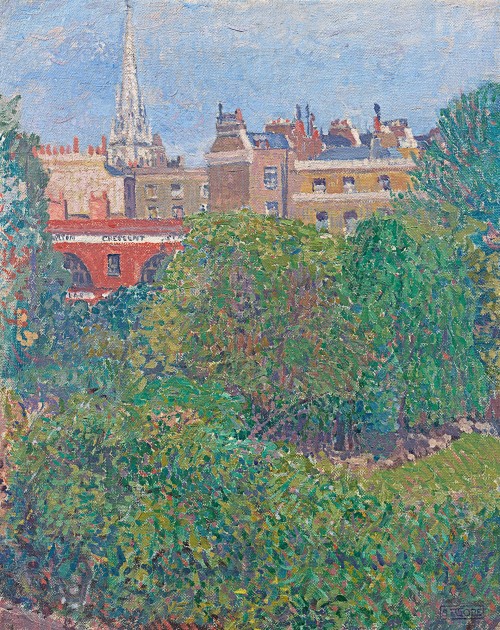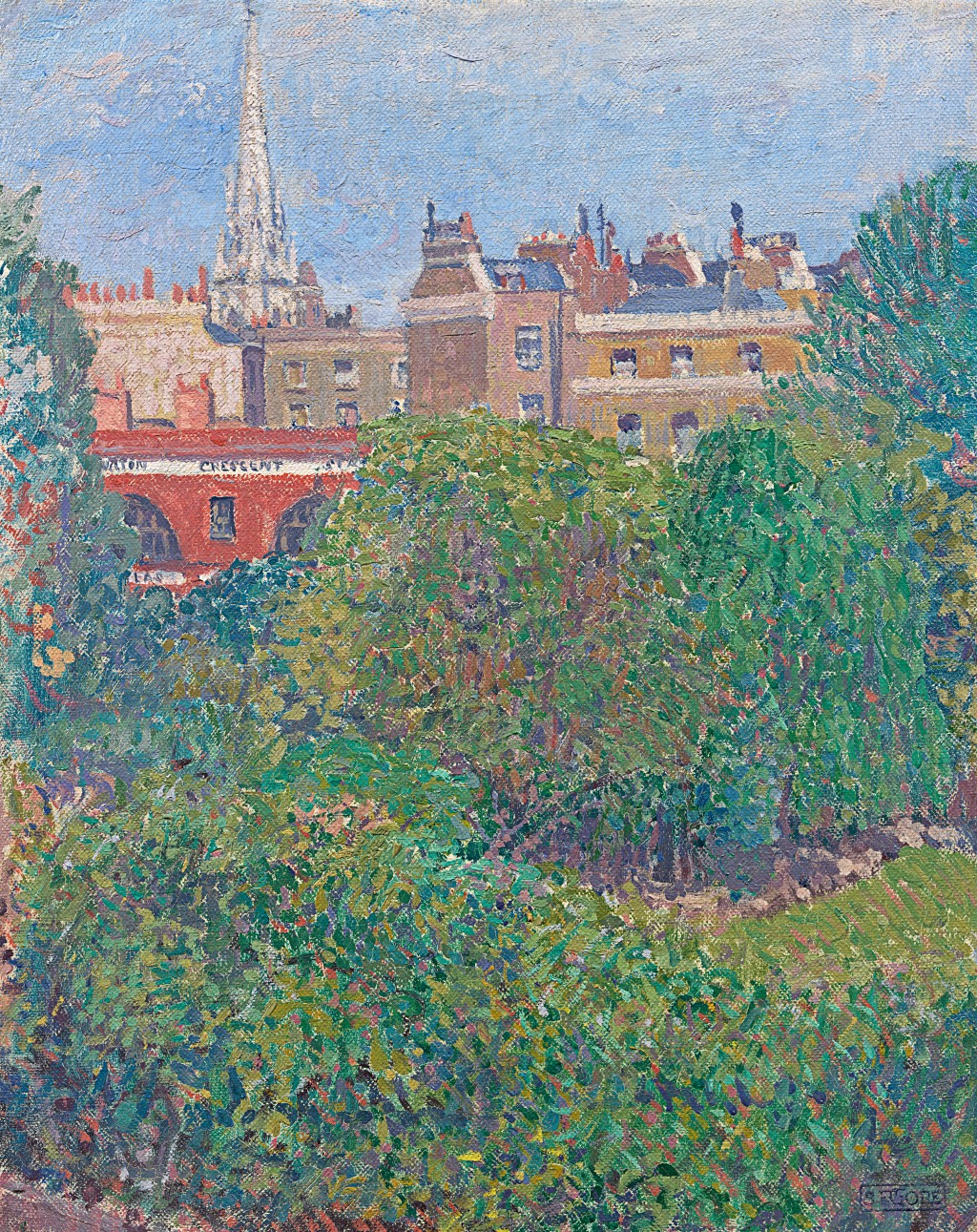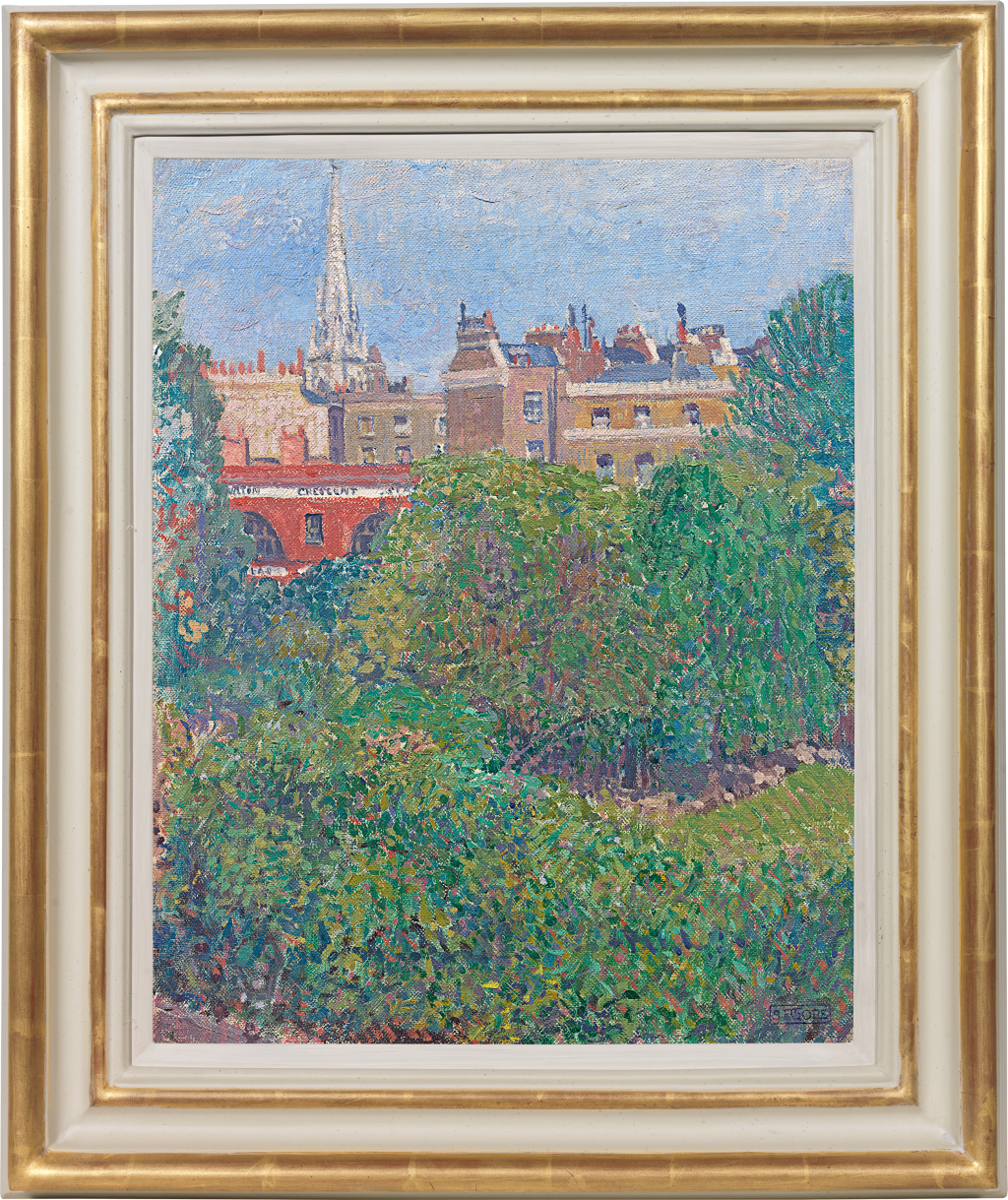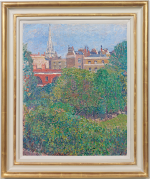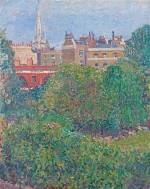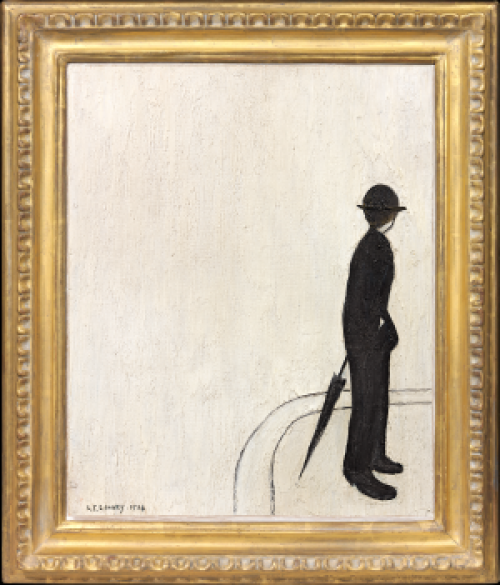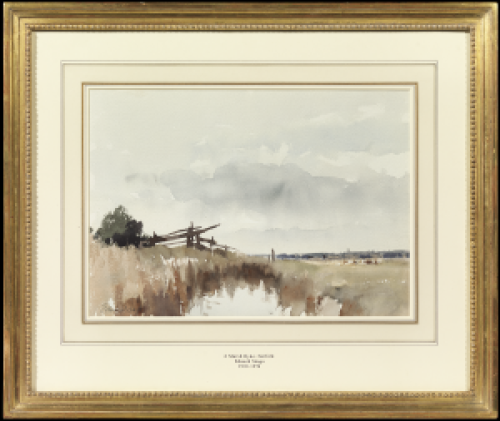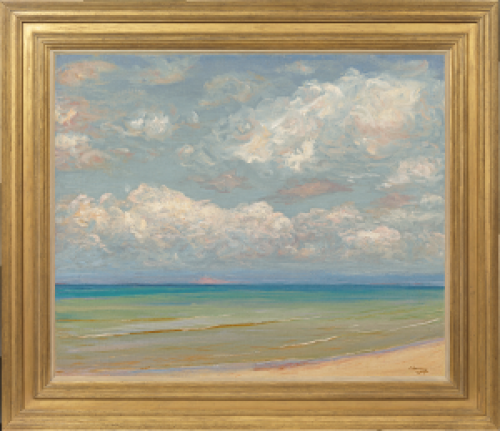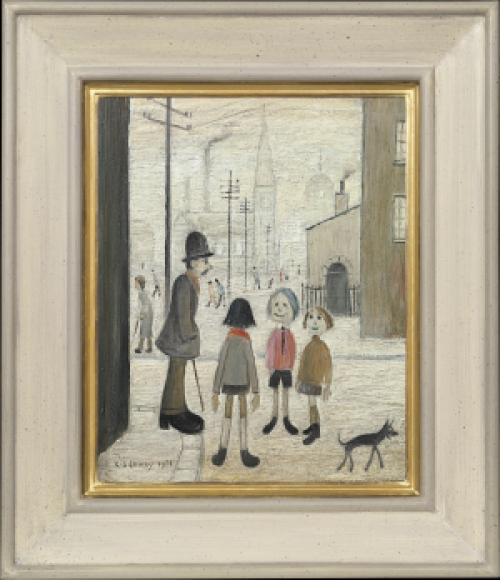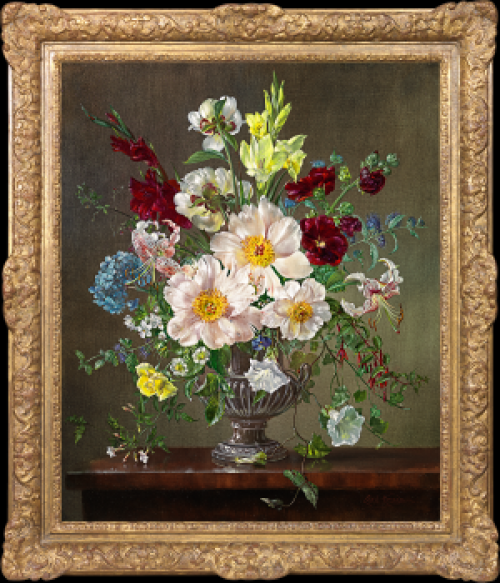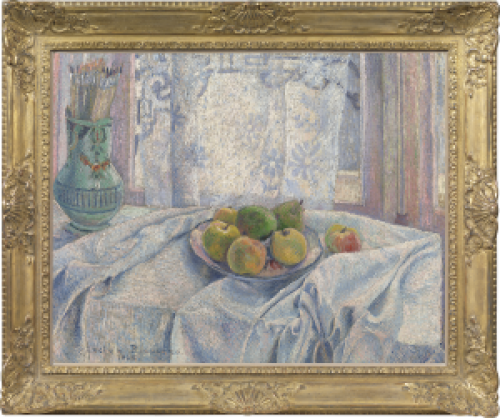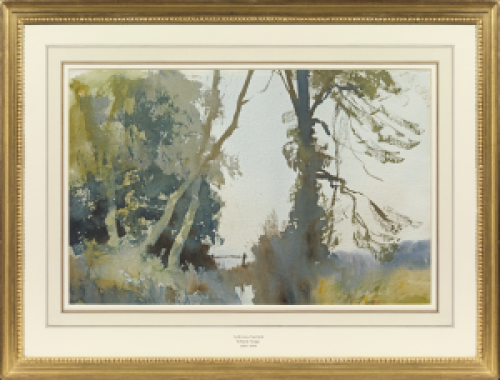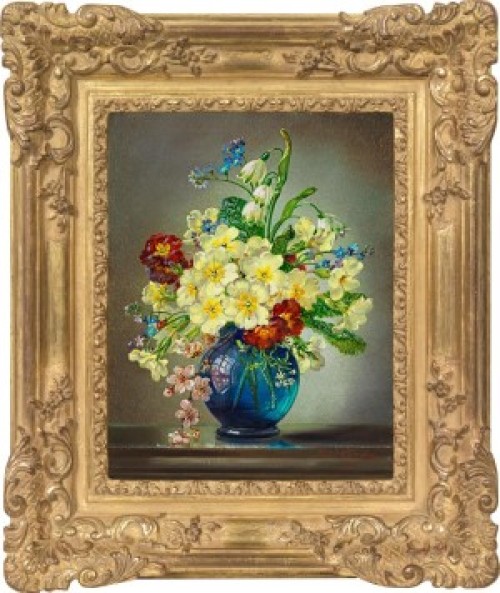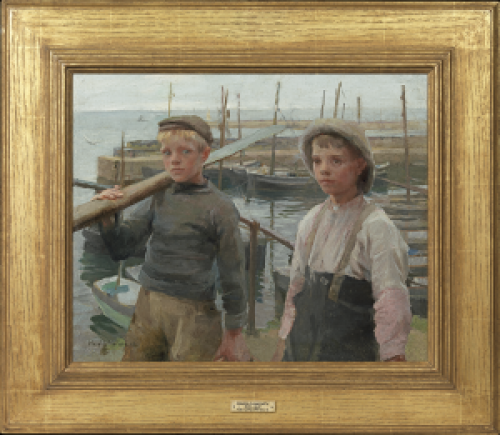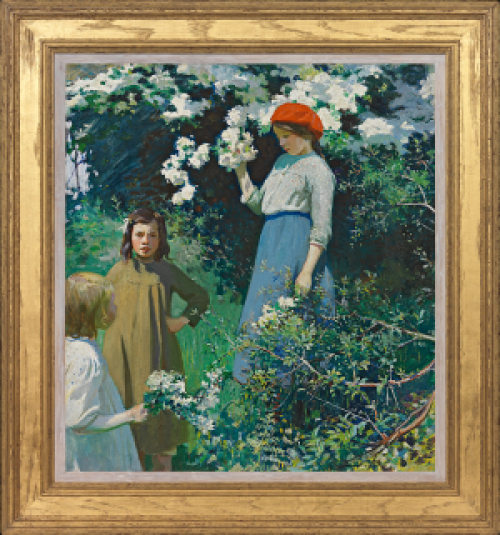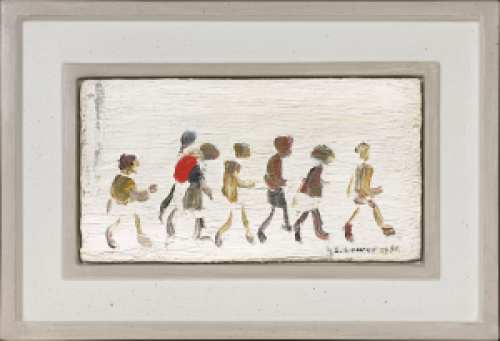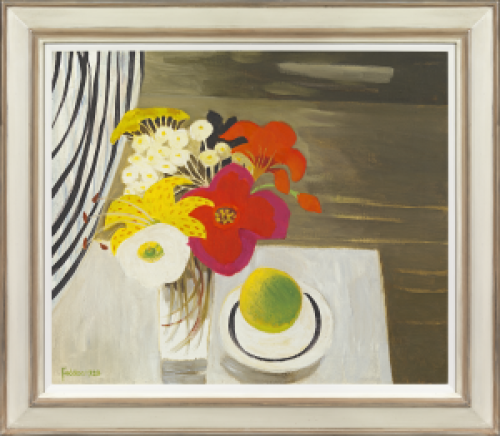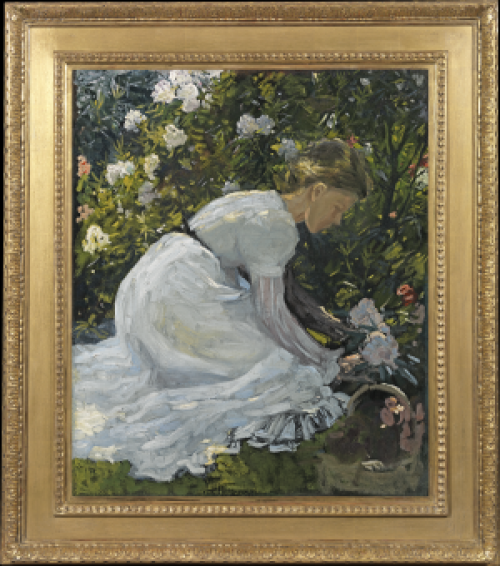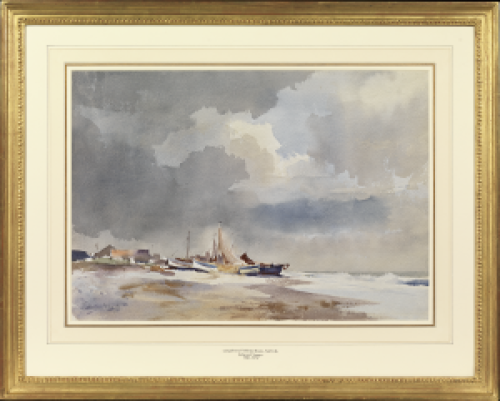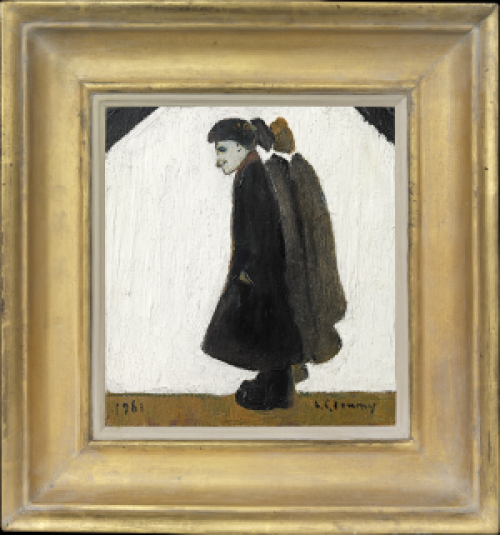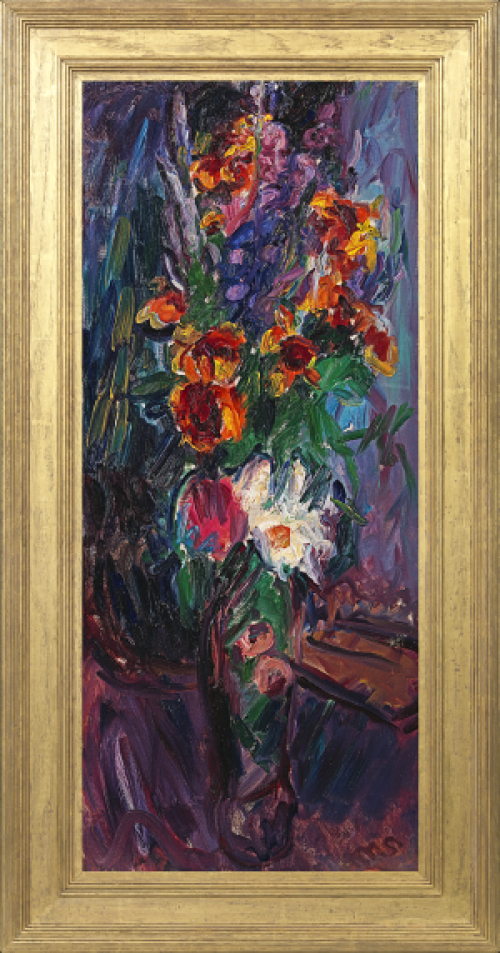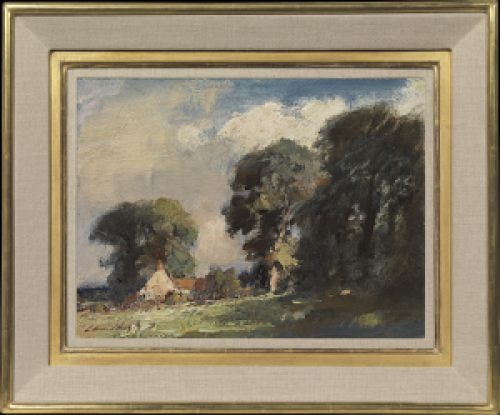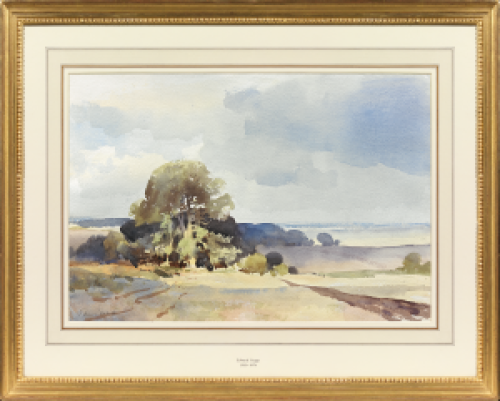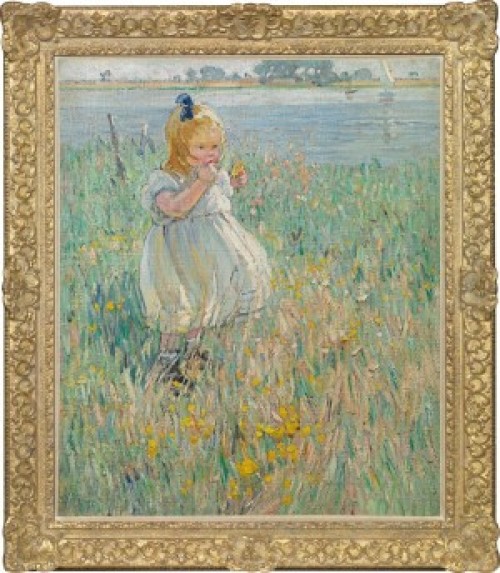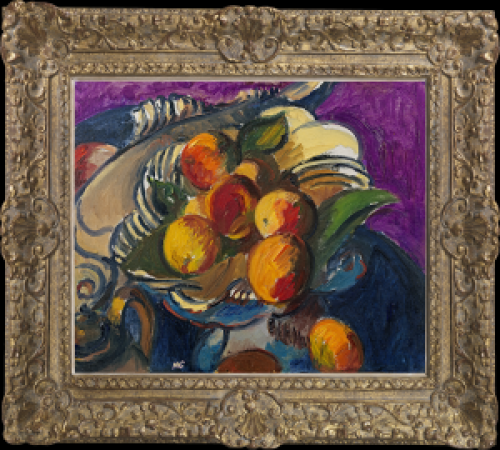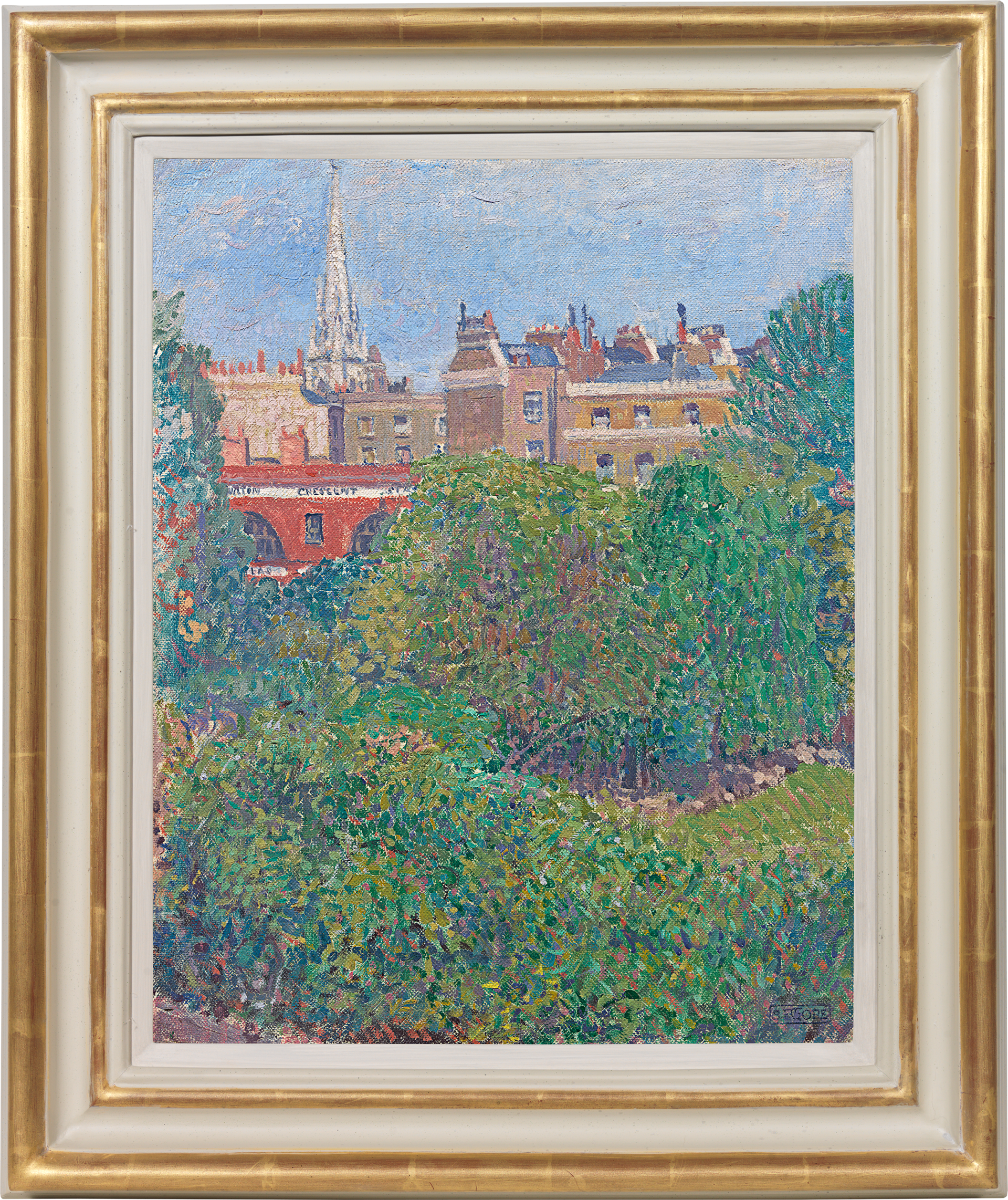SPENCER FREDERICK GORE
Epsom 1878 – 1914 Richmond
Ref: CD 151
Mornington Crescent
Stamped lower right: SF GORE; inscribed by Harold Gilman on a label attached to the stretcher: Painted by SF Gore in 1910. From / window at 31 Mornington Crescent, n.w. / (102) a*
Oil on canvas: 20 x 16 ⅛ in / 50.8 x 41 cm
Frame size: 26 ½ x 22 ¼ in / 67.3 x 56.5 cm
In its original coloured and waxed hollow frame
Provenance:
Lefevre Gallery, London [203/47]
Sir John Mills
Sotheby’s London, 10th November 1981, lot 103, as Mornington Crescent Tube Station
Douglas Woolf
Sotheby’s London, 18th June 1997, lot 6;
Viscountess Macmillan of Ovenden DBE, née Ormsby-Gore, gifted to
Sir Brian Williamson CBE, then by descent
Private collection, UK
Exhibited:
London, Chenil Gallery, Paintings by Spencer F Gore, March-April 1911, no.9, as The Steeple and the Tube
London, Lefevre Gallery, Recent Paintings by Anne Carlisle: Twenty Paintings by Spencer Gore, June 1945, no.31, as Mornington Crescent Tube Station
Literature:
Wendy Baron, Perfect Moderns: A History of the Camden Town Group, Ashgate, Aldershot 2000, no.16, p.118, illus. in colour p.119
From 1910 to 1912, Spencer Frederick Gore rented a room at 31 Mornington Crescent (a few doors from his close friend and fellow founding member of the Camden Town Group, Walter Sickert) and while there, painted the view from his first-floor window looking across the crescent gardens throughout the year. At least a dozen paintings of the subject are known, including works in the collections of the British Council, the Museum of London, Tate, Leeds City Art Gallery, National Museum of Wales, Cardiff and the Museum of Fine Arts, Boston. Frank Rutter in his review of Gore’s solo exhibition at the Chenil Gallery in 1911, noted that ‘it is the hall-mark of the true artist that he does not have to wander far afield in search of beauty. He finds it ever waiting for him at his own door, as Mr Gore has found it in his exquisite Mornington Crescent series.’[1]
In an article entitled ‘A Perfect Modern’, published after Gore’s untimely death, Walter Sickert recalled the creation of the series: ‘There was a month of June a few years ago which Gore verily seems to have used as if he had known that it was to be for him the last of its particularly fresh and sumptuous kind. He used it to look down on the garden of Mornington Crescent. The trained trees rise and droop in fringes, like fountains, over the little well of greenness and shade where parties of young people are playing at tennis. The backcloth of this scene is formed by the tops of the brown houses of the Hampstead Road, and the liver-coloured tiles of the Tube Station.’[2]
*Wendy Baron, Perfect Moderns, p.179: ‘Gore signed his paintings on their sale. After Gore’s sudden death, his widow and Gilman sorted out all the paintings left in his studio. They stamped the artist’s name (S.F. Gore within a boxed outline) on the unsigned paintings and placed descriptive handwritten labels on the back. The labels were numbered according to the presumed date of each painting within the chronological sequence of the Gore’s work. ‘The number is sometimes followed by the letter ‘a’, denoting that Gilman and Mrs Gore considered the painting especially important.’
[1] Frank Rutter, ‘Round the Galleries’, The Sunday Times, 26th March 1911, p.18.
[2] Walter Sickert, ‘A Perfect Modern’, New Age, 9th April 1914, p.718.

